-
 Bitcoin
Bitcoin $81,554.2560
4.80% -
 Ethereum
Ethereum $1,578.0926
5.66% -
 Tether USDt
Tether USDt $0.9994
0.02% -
 XRP
XRP $2.0188
9.62% -
 BNB
BNB $577.4003
2.57% -
 USDC
USDC $1.0000
-0.05% -
 Solana
Solana $113.8516
6.19% -
 Dogecoin
Dogecoin $0.1562
6.05% -
 TRON
TRON $0.2396
3.32% -
 Cardano
Cardano $0.6179
7.94% -
 UNUS SED LEO
UNUS SED LEO $9.4404
3.12% -
 Chainlink
Chainlink $12.3587
8.16% -
 Avalanche
Avalanche $18.2567
9.30% -
 Hedera
Hedera $0.1744
13.68% -
 Toncoin
Toncoin $2.9641
-1.78% -
 Stellar
Stellar $0.2356
6.20% -
 Shiba Inu
Shiba Inu $0.0...01197
7.82% -
 Sui
Sui $2.1650
10.29% -
 MANTRA
MANTRA $6.4537
3.49% -
 Bitcoin Cash
Bitcoin Cash $294.5096
7.10% -
 Litecoin
Litecoin $73.9179
2.83% -
 Polkadot
Polkadot $3.5233
2.88% -
 Dai
Dai $1.0000
0.03% -
 Bitget Token
Bitget Token $4.2604
4.62% -
 Ethena USDe
Ethena USDe $0.9988
0.05% -
 Hyperliquid
Hyperliquid $13.9158
7.36% -
 Pi
Pi $0.5959
3.25% -
 Monero
Monero $201.5235
3.15% -
 Uniswap
Uniswap $5.1341
4.88% -
 OKB
OKB $52.8872
2.02%
How to calculate the benefits and costs of mining?
To assess crypto mining profitability, calculate daily revenue from block rewards and fees, then subtract costs like electricity, hardware, and maintenance.
Mar 30, 2025 at 11:00 pm
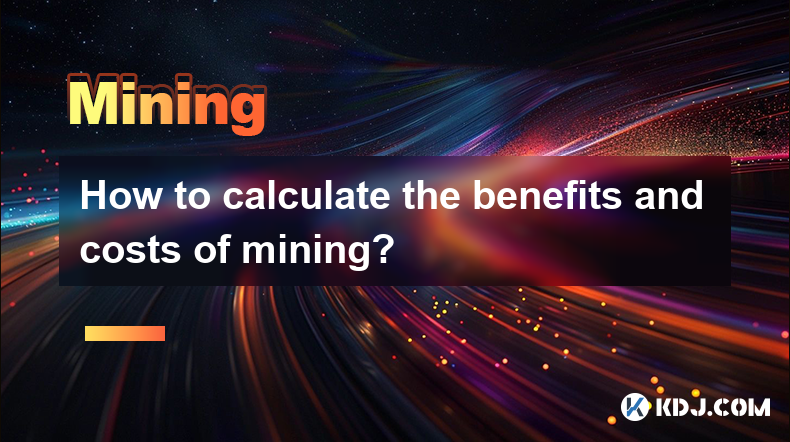
Understanding the Profitability of Cryptocurrency Mining
Mining cryptocurrency involves using powerful computer hardware to solve complex mathematical problems, validating transactions, and adding them to the blockchain. The reward for this work is newly minted cryptocurrency and transaction fees. However, determining profitability requires a careful calculation of both benefits and costs. This article will guide you through the process.
Calculating Revenue: Your Mining Income
Your revenue stream primarily comes from two sources: block rewards and transaction fees.
Block Rewards: This is the predetermined amount of cryptocurrency awarded to the miner who successfully solves a block's cryptographic puzzle first. The amount varies depending on the cryptocurrency and is often adjusted over time through halving events (e.g., Bitcoin). You need to research the current block reward for the specific coin you're mining.
Transaction Fees: Many cryptocurrencies incorporate transaction fees, a small amount paid by users to prioritize their transactions. Miners include these fees in their block reward. The amount varies based on network congestion and user demand. It's difficult to predict precisely, but you can monitor average transaction fees on relevant blockchain explorers.
Calculating Costs: The Expenses of Mining
Mining is resource-intensive, involving significant upfront and ongoing costs. These costs need to be meticulously tracked to assess profitability.
Hardware Costs: This includes the purchase price of ASIC miners (for Bitcoin and similar coins) or GPUs (for other cryptocurrencies), power supplies, and any cooling systems. Consider depreciation as these machines have a limited lifespan.
Electricity Costs: This is often the most significant ongoing expense. Electricity consumption varies greatly depending on the mining hardware and its efficiency. You need to know your electricity price per kilowatt-hour (kWh) and your miner's power consumption (Watts).
Internet Costs: A stable and high-speed internet connection is crucial for mining. Factor in the monthly cost of your internet service.
Cooling Costs: Mining hardware generates significant heat. Effective cooling is essential to prevent damage and maintain optimal performance. This might include the cost of air conditioning, fans, or specialized cooling solutions.
Maintenance Costs: Hardware can malfunction, requiring repairs or replacements. Budget for potential maintenance and repair expenses.
Software Costs: Some mining software might require a license fee or subscription. Factor this into your overall cost calculation.
The Calculation: Putting it All Together
Calculating profitability involves comparing your revenue (block rewards + transaction fees) against your costs (hardware, electricity, internet, cooling, maintenance, software). Here's a simplified approach:
Step 1: Determine your daily revenue. This requires estimating your daily block reward and transaction fees based on your hash rate and network difficulty.
Step 2: Calculate your daily operating costs. This includes daily electricity consumption multiplied by your electricity price, plus any other daily costs (e.g., a portion of your yearly internet cost).
Step 3: Subtract your daily operating costs from your daily revenue. The result is your daily profit (or loss).
Step 4: Annualize your profit (or loss). Multiply your daily profit (or loss) by 365.
Step 5: Consider hardware depreciation. Spread the initial cost of your mining hardware over its expected lifespan and deduct this depreciation from your annual profit.
Remember, the difficulty of mining changes over time, affecting your profitability. Network difficulty increases as more miners join, making it harder to solve blocks and reducing individual rewards.
Factors Affecting Profitability: Beyond the Basics
Several factors beyond the core cost-revenue calculation influence mining profitability.
Hash Rate: Your mining hardware's hash rate directly impacts your chances of solving a block and earning a reward. A higher hash rate generally translates to more rewards.
Network Difficulty: As mentioned, this metric measures how difficult it is to mine a block. A higher difficulty reduces your chances of success.
Cryptocurrency Price: The price of the cryptocurrency you're mining directly affects your revenue. A price increase boosts your profits, while a price drop diminishes them.
Pool Fees: If you're mining in a pool, a portion of your earnings will go to the pool operator as a fee.
Regulatory Changes: Government regulations can significantly impact the mining landscape, affecting profitability.
Common Questions and Answers
Q: How do I calculate my daily electricity cost for mining?
A: Multiply your miner's power consumption (in Watts) by the number of hours it runs per day, then divide by 1000 to get kilowatt-hours (kWh). Finally, multiply the kWh by your electricity price per kWh.
Q: What is network difficulty, and why is it important?
A: Network difficulty is a measure of how hard it is to solve a block and earn a reward. Higher difficulty means less chance of success for individual miners.
Q: How do I account for hardware depreciation when calculating profitability?
A: Estimate the lifespan of your mining hardware and divide its initial cost by the number of years (or months) it's expected to last. This gives you an annual (or monthly) depreciation cost to deduct from your profits.
Q: Should I mine solo or join a mining pool?
A: Solo mining offers the potential for larger rewards but is riskier due to the uncertainty of finding blocks. Mining pools offer more consistent, albeit smaller, rewards. The best choice depends on your resources and risk tolerance.
Q: How often should I recalculate my mining profitability?
A: Given the fluctuating nature of cryptocurrency prices, electricity costs, and network difficulty, it's advisable to recalculate your profitability at least monthly, or even weekly, for a more accurate assessment.
Disclaimer:info@kdj.com
The information provided is not trading advice. kdj.com does not assume any responsibility for any investments made based on the information provided in this article. Cryptocurrencies are highly volatile and it is highly recommended that you invest with caution after thorough research!
If you believe that the content used on this website infringes your copyright, please contact us immediately (info@kdj.com) and we will delete it promptly.
- The crypto market is heating up, and a handful of altcoins are positioned to dominate the next bull run.
- 2025-04-10 22:35:12
- As the broader crypto market continues to remain trapped in the ongoing downtrend, some assets have gained the limelight due to their outstanding performance. Today, data from Phoenix Group highlighted top assets that are in the accumulation zone, pointed
- 2025-04-10 22:35:12
- Bitcoin Pepe: #1 Cheap crypto to buy to create meme economy on BTC
- 2025-04-10 22:30:12
- Bitcoin Recrosses the $100,000 Mark as Ethereum Follows with a 4% Rise
- 2025-04-10 22:30:12
- As Islamic finance nears $12.5 billion, Shariah-compliant crypto projects aim to serve two billion Muslims
- 2025-04-10 22:25:12
- The Darkness frontman Justin Hawkins shared his thoughts on Sleep Token's new song ‘Caramel’
- 2025-04-10 22:25:12
Related knowledge
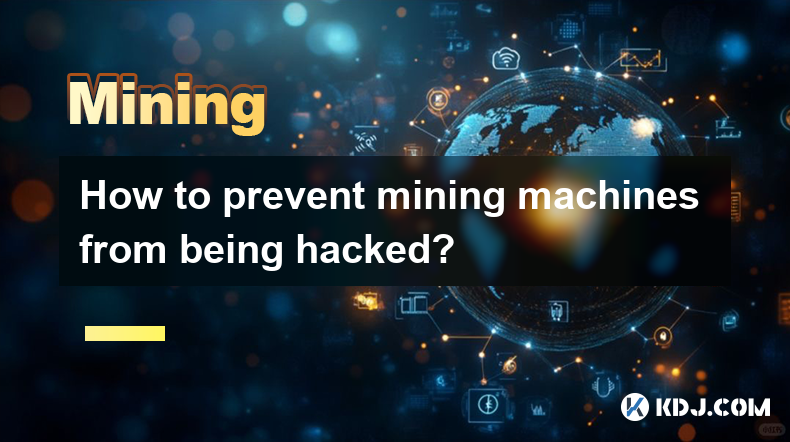
How to prevent mining machines from being hacked?
Apr 08,2025 at 09:00pm
In the world of cryptocurrency, mining machines play a crucial role in securing networks and validating transactions. However, these machines are also prime targets for hackers looking to exploit vulnerabilities for financial gain. Preventing mining machines from being hacked requires a multi-faceted approach that includes robust security measures, regu...
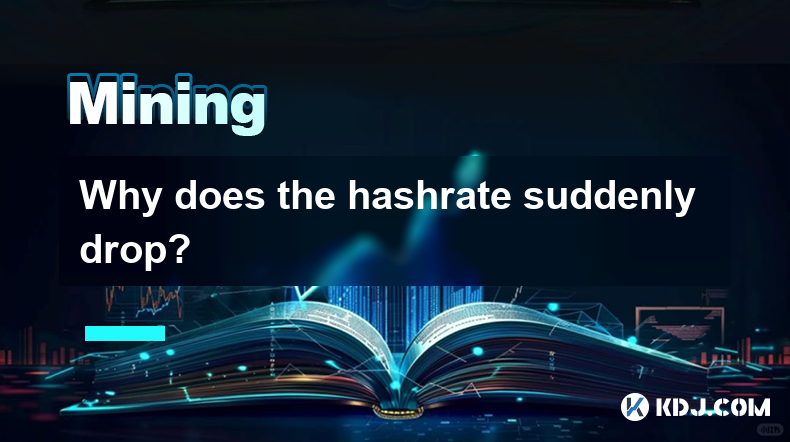
Why does the hashrate suddenly drop?
Apr 09,2025 at 08:29pm
Introduction to HashrateHashrate is a critical metric in the world of cryptocurrencies, particularly for those that use Proof of Work (PoW) consensus mechanisms like Bitcoin. It represents the total computational power being used to mine and process transactions on a blockchain. A sudden drop in hashrate can be alarming for miners and investors alike, a...
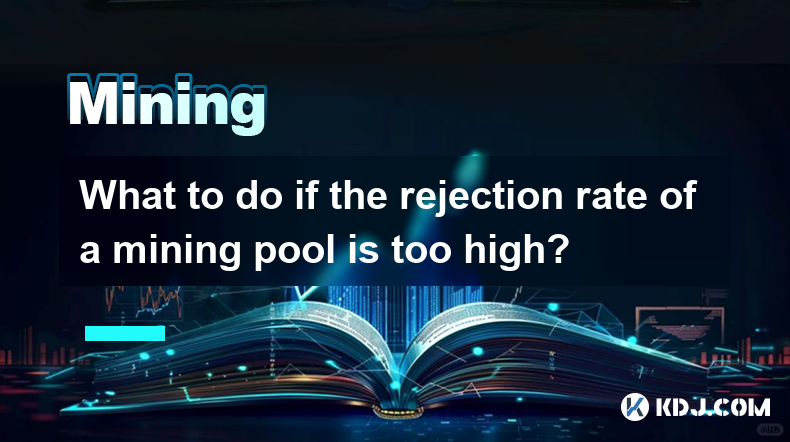
What to do if the rejection rate of a mining pool is too high?
Apr 10,2025 at 01:28am
High rejection rates in mining pools can be a frustrating issue for miners, as it directly impacts their profitability and efficiency. Understanding the causes and implementing effective solutions is crucial to maintaining a healthy mining operation. This article will delve into the reasons behind high rejection rates and provide detailed steps to addre...
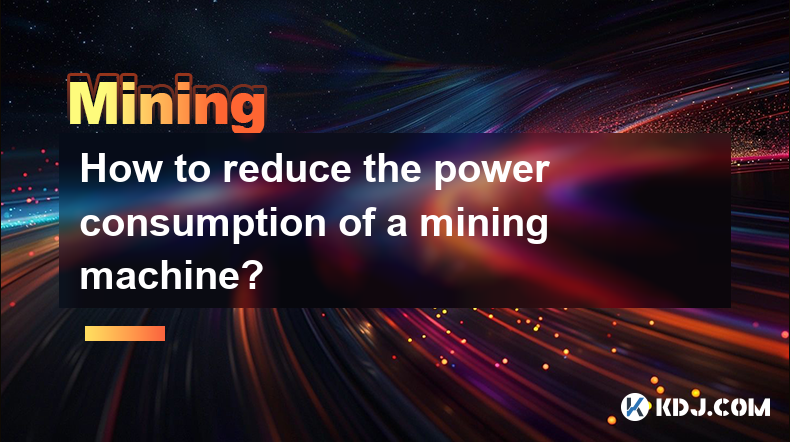
How to reduce the power consumption of a mining machine?
Apr 09,2025 at 11:28pm
Mining cryptocurrencies can be a lucrative endeavor, but it comes with the significant drawback of high power consumption. Reducing the power consumption of a mining machine not only helps in cutting down electricity costs but also contributes to a more sustainable approach to mining. In this article, we will explore various strategies and techniques to...
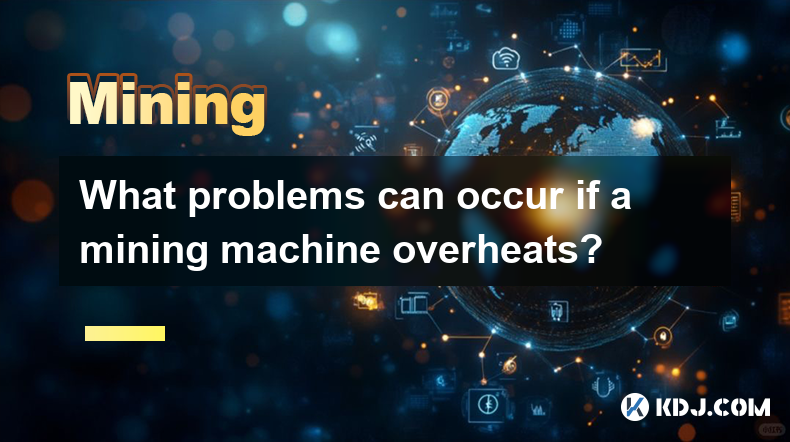
What problems can occur if a mining machine overheats?
Apr 09,2025 at 01:36pm
Overheating is a common issue that can plague mining machines, leading to a variety of problems that can affect their performance and longevity. Understanding the potential issues that arise from overheating is crucial for miners who want to maintain the efficiency and durability of their equipment. This article will delve into the various problems that...
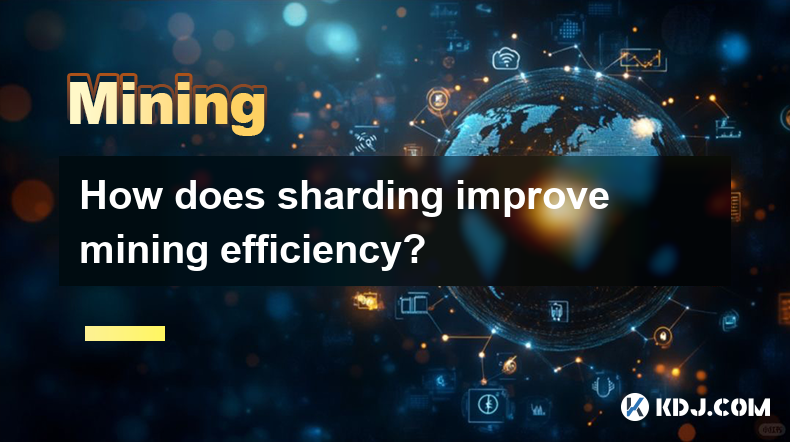
How does sharding improve mining efficiency?
Apr 10,2025 at 06:35pm
Sharding is a significant technological advancement in the realm of blockchain and cryptocurrencies, particularly aimed at enhancing the scalability and efficiency of mining operations. By breaking down a blockchain network into smaller, manageable pieces called shards, sharding allows for parallel processing of transactions and blocks. This article del...

How to prevent mining machines from being hacked?
Apr 08,2025 at 09:00pm
In the world of cryptocurrency, mining machines play a crucial role in securing networks and validating transactions. However, these machines are also prime targets for hackers looking to exploit vulnerabilities for financial gain. Preventing mining machines from being hacked requires a multi-faceted approach that includes robust security measures, regu...

Why does the hashrate suddenly drop?
Apr 09,2025 at 08:29pm
Introduction to HashrateHashrate is a critical metric in the world of cryptocurrencies, particularly for those that use Proof of Work (PoW) consensus mechanisms like Bitcoin. It represents the total computational power being used to mine and process transactions on a blockchain. A sudden drop in hashrate can be alarming for miners and investors alike, a...

What to do if the rejection rate of a mining pool is too high?
Apr 10,2025 at 01:28am
High rejection rates in mining pools can be a frustrating issue for miners, as it directly impacts their profitability and efficiency. Understanding the causes and implementing effective solutions is crucial to maintaining a healthy mining operation. This article will delve into the reasons behind high rejection rates and provide detailed steps to addre...

How to reduce the power consumption of a mining machine?
Apr 09,2025 at 11:28pm
Mining cryptocurrencies can be a lucrative endeavor, but it comes with the significant drawback of high power consumption. Reducing the power consumption of a mining machine not only helps in cutting down electricity costs but also contributes to a more sustainable approach to mining. In this article, we will explore various strategies and techniques to...

What problems can occur if a mining machine overheats?
Apr 09,2025 at 01:36pm
Overheating is a common issue that can plague mining machines, leading to a variety of problems that can affect their performance and longevity. Understanding the potential issues that arise from overheating is crucial for miners who want to maintain the efficiency and durability of their equipment. This article will delve into the various problems that...

How does sharding improve mining efficiency?
Apr 10,2025 at 06:35pm
Sharding is a significant technological advancement in the realm of blockchain and cryptocurrencies, particularly aimed at enhancing the scalability and efficiency of mining operations. By breaking down a blockchain network into smaller, manageable pieces called shards, sharding allows for parallel processing of transactions and blocks. This article del...
See all articles





















































































